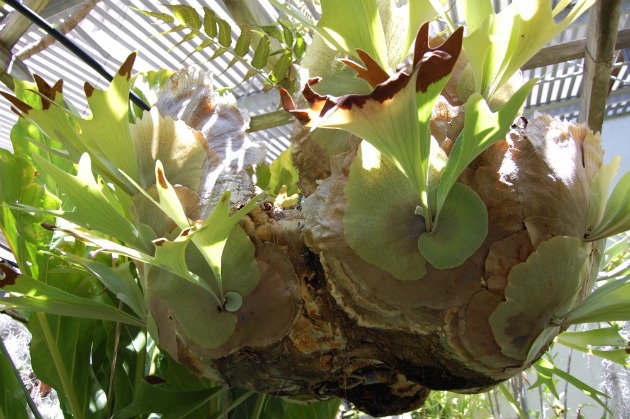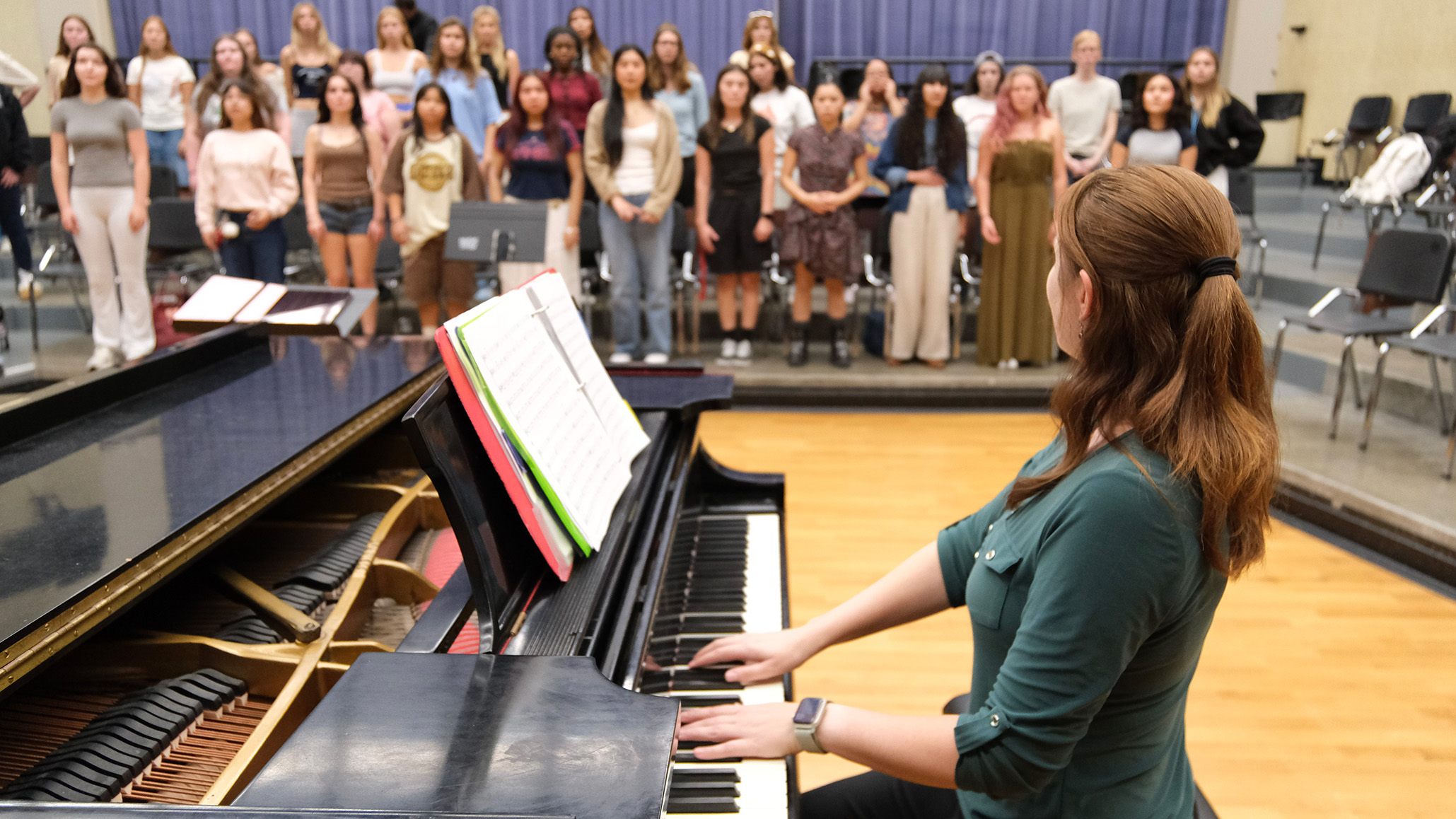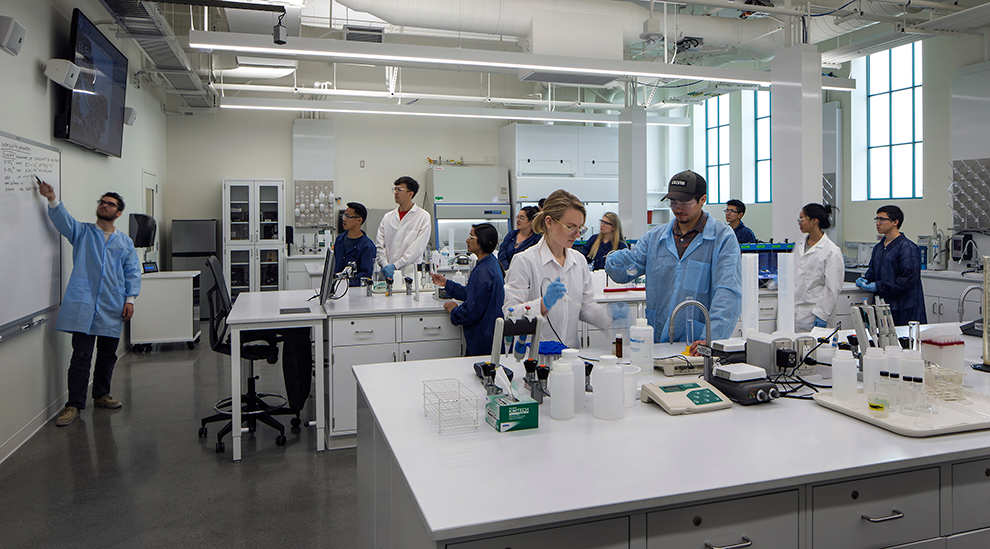Greenhouse is Hidden Gem on Campus
Showcasing more than 400 species of plants, the SDSU greenhouse offers a place for teaching and housing many botanical experiments.

Deep within the confines of San Diego State, between the Life Science North and Life Science South buildings, is a spectacular greenhouse, a hidden treasure of the university.
Showcasing more than 400 species of plants from around the world, the SDSU greenhouse is a fantastic display of rare and unusual specimens, as well as a place used for teaching and housing many botanic and genetic experiments.
History of the greenhouse
The greenhouse was founded in the 1960s for teaching purposes by SDSU’s botany department, which was later absorbed into the biology department.
The biology department now uses the greenhouse as an example of the diversity that can be found in different plant families. In doing so, it has acquired a collection of well-known plants, such as coffee, cocoa, hops and tobacco, and also some of the most unique plants on the planet.
About the plants
The SDSU greenhouse is home to a wide variety of carnivorous plants including Dionaea muscicula (Venus fly trap) and Sarracenia (pitcher plants). These plants are especially fascinating because of their evolutionary adaptations.
Many carnivorous plants live in habitats in which it is difficult for the plant roots to obtain nutrients from the soil. Over centuries, these plants have adapted in order to obtain essential nutrients from insects instead.
Nepenthes Holland hybrids are one such example found in the SDSU greenhouse. The structure of this plant is designed to attract and trap insects by a combination of color, nectar and scent.
“”
When insects get curious to see if more nectar is inside the plant, they are unable to get out due to a waxy substance that makes the plant slippery. The fluid at the bottom of the pitcher drowns the insect, which is then slowly broken down by the pitcher’s digestive enzymes. The nutrients released by the insect are then absorbed by the plant.
The greenhouse also contains a large variety of beautiful orchids, including the vanilla orchid. A valuable plant, vanilla is also extremely temperamental as the temperature in which the plant is kept can never fluctuate more than ten degrees or it will not flower. It can also only be pollinated during specific hours in the day. For those reasons, the vanilla orchid in the SDSU greenhouse has not flowered for 30 years.
The greenhouse does, however, house a plant that has been growing for about 30 years: a staghorn fern. Staghorn ferns are unique because they are air plants, meaning they do not require soil or much water. These plants receive all of their nutrients from the air. As their leaves die, they mold to the plant, making the fern larger. Fully matured, staghorn ferns can grow up to a yard.
Unique venue for research
Research is another primary focus of the greenhouse as ecosystems from around the world can be mirrored in order to make genetic plant experimentation possible.
“We’re growing corn plants to study abiotic stress, which includes effects of cold temperatures and drought on the soil,” said Joan Chen, director of SDSU's Microchemical Core Facility (MCF). “The goal of this research is to understand the molecular and biochemical mechanisms of how the plant responds to stress.”
A plant’s ability to survive environmental stress is directly related to its yield, and Chen’s research provides insight into achieving better crop yields to meet the needs of future populations.
Chen, along with SDSU biology Professor Elizabeth Waters, is also researching the evolution of thermo tolerance in the California Boechera to shed light on how wild plants adapt to stress and how crop species tolerate heat stress.
Another research project in the SDSU greenhouse aims to learn more about the Quino Checkerspot, an endangered species of butterflies that appears in southern California.
Biology professor Kathy Williams uses the greenhouse to grow plants to feed caterpillars in order to investigate their feeding and behavioral patterns.
“By raising caterpillars on various plants that have been grown under different conditions, we can learn more about how to enhance this species’ habitat,” Williams said.
The greenhouse is open for visitation hours Monday through Friday, 9–11 a.m. For more information contact SDSU greenhouse technician Bob Mangan at [email protected].
This story originally appeared in the Mission Hills Garden Club's summer 2011 newsletter.
The SDSU Greenhouse: A Hidden Gem SDSU's well-kept secret: a spectacular and unique greenhouse



